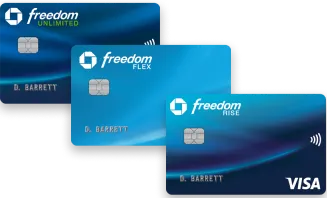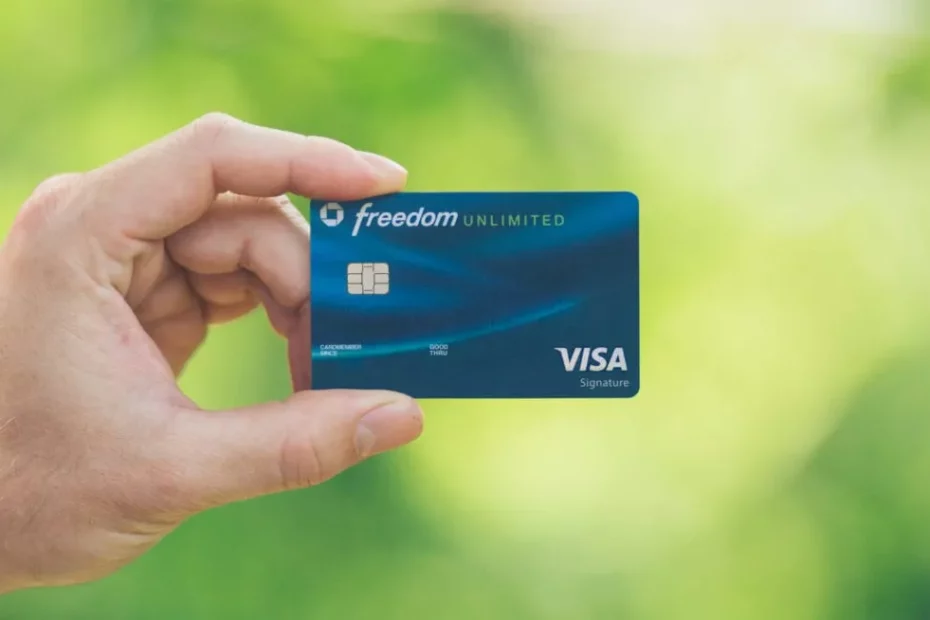The Chase Freedom card has emerged as a frontrunner in the realm of credit cards, offering a unique blend of cashback benefits and the potential to supercharge redemption rates through its association with Chase Ultimate Rewards. In this comprehensive review, we delve into the intricacies of rates, fees, financial information, options, and comparisons to help you determine whether the Chase Freedom card is the right fit for you.
Earning Potential: Unveiling the 5% Quarters
The Chase Freedom card is renowned for its ability to maximize earnings through quarterly 5x bonus categories, allowing cardholders to earn 5% back on up to $1,500 in bonus category transactions per quarter. To fully capitalize on this feature, a strategic understanding of the eligible purchases is imperative. Leveraging these bonus categories effectively can significantly enhance the overall value proposition of this credit card.
While often perceived as a cashback card, the Chase Freedom card unveils another layer of potential for those holding a Chase Ultimate Rewards-earning card. The synergy with cards such as the Chase Sapphire Preferred Card, Chase Sapphire Reserve, or the Ink Business Preferred Credit Card allows users to convert their cashback rewards into Chase Ultimate -Ipoints, effectively doubling their earnings. Additionally, every fifth month presents an opportunity for a 10% bonus on up to $1,500 in bonus category transactions, further augmenting the appeal of the Chase Freedom card.
Is the Chase Freedom Card for You?
For individuals new to the world of rewards, the Chase Freedom card proves to be an excellent entry point. By pairing it with a Chase Ultimate Rewards-earning card, users can convert cashback into valuable points. However, potential applicants must navigate the 5/24 law, a stipulation by Chase that restricts new card openings if the individual has opened five or more accounts with other issuers in the previous 24 months.
The rotating bonus categories of the Chase Freedom card make it an ideal choice for meticulous spenders keen on maximizing their credit card benefits. However, for those not inclined to track category spending or who do not frequently make purchases in the designated categories, alternative card options may be worth exploring. While the Chase Freedom’s rewards structure can be lucrative for strategic spenders, individuals seeking a more straightforward and consistent rewards experience may find other credit cards with fixed or broader bonus categories to better suit their preferences.
Bonus for New Cardholders: A Solid Incentive
New cardholders stand to benefit from a sign-up bonus coupled with the absence of an annual fee, positioning the Chase Freedom card as an excellent first credit card. While the sign-up bonus may not rival those of cards with higher annual fees, the absence of an annual charge is a compelling advantage. Furthermore, the option to convert the bonus to 20,000 Chase Ultimate Rewards points enhances its value, translating to $400.
During the initial 15 months after account opening, new cardholders enjoy a 0% promotional APR on both transactions and balance transfers, providing a window of financial flexibility. Post this period, the variable APR ranges from 14.99% to 23.74%. Additionally, an introductory balance transfer fee of $5 or 3% of the transfer amount (whichever is greater) is applicable within the first 60 days. However, the 5/24 rule may pose a limitation for present and past Chase Freedom card holders who have earned a bonus in the last 24 months, serving as the sole drawback for some potential users.
Benefits Beyond the Basics
For a credit card with no annual fee, the Chase Freedom card offers commendable benefits. The 5% earnings on up to $1,500 spent in rotating bonus categories per quarter distinguish it in a competitive landscape. Additionally, the card extends travel protections, including auto rental crash injury waivers and travel cancellation and interruption insurance, providing a layer of security for unexpected events.
In the realm of shopping protections, the Chase Freedom card stands out prominently. It offers purchase insurance, covering new purchases for up to $500 per claim and $50,000 per account against damage or theft. This robust coverage provides cardholders with a layer of security, ensuring that their valuable purchases are safeguarded against unforeseen circumstances.
Additionally, the extended warranty protection offered by the Chase Freedom card further enhances coverage for eligible warranties of three years or less, providing cardholders with added peace of mind. These comprehensive shopping protections contribute to the overall appeal of the Chase Freedom card, making it a valuable choice for those who prioritize security and coverage for their purchases.
Redeeming Points: Unveiling Value
When it comes to redeeming points, the Chase Freedom card offers flexibility. Points earned through the card are typically valued at 1 cent each when exchanged for cash back, gift cards, or travel. However, the real value emerges when combining the Chase Freedom card with a participating Chase credit card in the Ultimate Rewards program, effectively doubling the redemption value.
Comparative Analysis: Navigating the Landscape
To fully appreciate the value proposition of the Chase Freedom card, it’s crucial to consider it within the broader context of available credit card options. While its standout feature of 5% quarterly bonus categories sets it apart, potential cardholders should assess their spending patterns to determine if these align with the designated categories.
Careful consideration is necessary to ensure that individuals can fully capitalize on the card’s benefits and maximize their rewards. For those who find that their spending habits align well with the rotating bonus categories, the Chase Freedom card can be a lucrative choice. However, for those whose expenditures are concentrated in other areas, exploring alternative credit cards with more tailored rewards structures might be a more strategic approach.
Comparing the Chase Freedom card to other offerings in the market, particularly those with annual fees, reveals a nuanced decision-making process. The absence of an annual fee is a significant advantage, especially for individuals seeking a low-risk entry into the realm of rewards cards. However, those who frequently indulge in specific categories not covered by the rotating bonuses might find other cards with fixed, higher cashback rates more appealing.
The Downside: Navigating Limitations
Despite its numerous merits, the Chase Freedom card is not without its limitations. The 5/24 rule, which restricts new card openings for individuals with five or more accounts across all issuers in the previous 24 months, may pose a significant barrier. This rule demands careful consideration, especially for those who have engaged in multiple credit card transactions in recent times.
Redemption Strategy: Maximizing Value
The Chase Freedom card’s redemption strategy adds an extra layer of complexity to the decision-making process. While points can be redeemed for cash back, gift cards, or travel at a standard 1 cent per point, the true potential is unlocked when combining the card with a participating Chase credit card in the Ultimate Rewards program. This synergy transforms points into Ultimate Rewards points, doubling their redemption value. However, the redemption options involving statement credits for Chase Pay transactions or Amazon Shop with Points purchases yield a lower value of 0.8 cents per point.
Final Verdict: Is Chase Freedom Your Card?
In the intricate landscape of credit cards, the Chase Freedom card emerges as a versatile and rewarding option. Its quarterly 5x bonus categories, combined with the opportunity for strategic point conversion, make it a formidable contender in the market. For those new to the world of rewards or seeking a first credit card, the Chase Freedom’s lack of an annual fee and enticing sign-up bonus make it an attractive choice. The 0% promotional APR for the first 15 months provides a financial cushion for new cardholders.

However, the decision to embrace the Chase Freedom card should be informed by individual spending habits, preferences, and the ability to navigate the 5/24 rule. If your spending aligns with the rotating bonus categories and you plan to explore Chase Ultimate Rewards-earning cards in the future, the Chase Freedom card can be a strategic addition to your wallet.
Conclusion: Unleashing the Potential
In conclusion, the Chase Freedom credit card stands out for its quarterly 5x bonus categories and the potential to elevate earnings through strategic partnerships with other Chase Ultimate Rewards-earning cards. Whether you are a seasoned rewards enthusiast or a newcomer, the Chase Freedom card presents a compelling option for maximizing your credit card benefits. Consider its unique features, weigh them against your spending habits, and make an informed decision that aligns with your financial goals.
